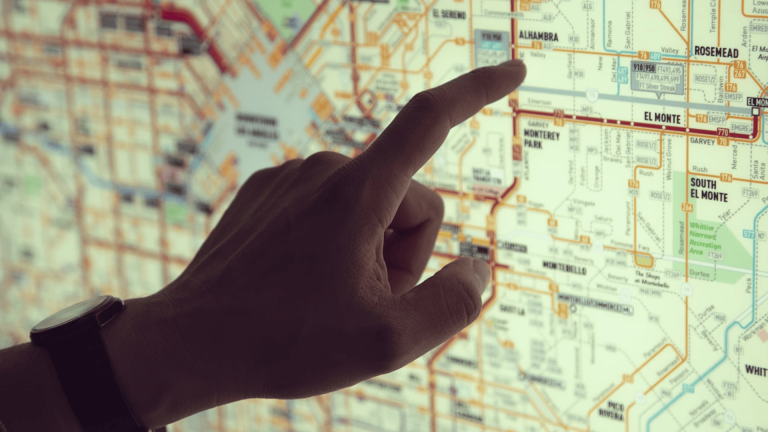How Employee Monitoring Apps Can Enhance Work-Life Balance

In today’s fast-paced and interconnected world, achieving a healthy balance between professional commitments and personal life can be tough. With more people working remotely and always being connected through technology, it’s hard for many employees to separate work from their personal time.
In fact, stats show that a significant majority of full-time employees in the United States, specifically 66%, perceive their work-life balance to be inadequate.
Yet, even with these difficulties, there is an opportunity for new ideas to help these individuals in finding their work-life balance. One such concept involves the utilization of employee monitoring applications.
These applications possess diverse features designed to enhance efficiency, foster accountability and ultimately render the task of balancing work and life more manageable.
Understanding Work-Life Balance
Work-life balance is more than a trendy phrase; it is very important for a person’s overall health. Mainly, this concept involves finding balance between the time dedicated to professional duties and personal pleasures like family moments, hobbies or self-care activities.
Finding this balance is essential for maintaining good mental and physical health, nurturing relationships, and having a satisfying career over the long term.
But with the constant engagement required in today’s world, it becomes more challenging to separate work from private life. This can make it difficult for people to relax and recharge after their job.
Employee Monitoring Apps: What Are They?
Employee monitoring apps serve as all-in-one platforms for addressing the complexities of blending daily work with personal life. These programs equip managers with detailed reports on how employees allocate their time, which websites they visit, and their overall output.
By observing and assessing work-related information, a time monitoring app helps companies boost efficiency, pinpoint improvement opportunities, and verify that employees are achieving their goals.
Typically, these applications come with functionalities like tracking time, observing activities, and evaluating productivity, all aiming to foster a workplace where transparency and accountability are paramount.
Promoting Accountability and Transparency
Employee monitoring apps offer a key advantage: they promote responsibility among team members. By showing what everyone is working on in real time, these apps motivate employees to own up to their tasks and meet deadlines.
Furthermore, these apps foster openness by letting everyone see each other’s contributions. This builds trust within the team and helps everyone understand how their work contributes to the organization’s success.
Especially in remote or distributed work setups where face-to-face meetings are rare, this kind of responsibility is crucial for keeping productivity and team spirit high.
Facilitating Time Management
Being able to manage time effectively is crucial for finding equilibrium between work and personal life. Employee monitoring applications can greatly contribute to this endeavor. They track time spent on various tasks and projects, giving workers the ability to arrange their workload and handle time more efficiently.
Also, these apps provide useful features such as arranging aid and duty reminders. This helps people to stay organized and concentrated during the day.
With improved time management resources, employees can alleviate stress, prevent burnout, and carve out time for activities beyond their professional obligations.
Encouraging Work-Life Boundaries
Employee monitoring applications offer a notable benefit by aiding individuals in creating and preserving clear distinctions between their professional and personal lives.
These apps enable employees to establish precise boundaries regarding working hours and accessibility, empowering them to disengage from work-related responsibilities beyond specified periods.
For instance, automated alerts can prompt employees to sign off at the conclusion of their workday, while activity summaries can identify instances of prolonged work hours or excessive screen usage.
By fostering improved work practices and advocating for a workplace environment that prioritizes harmony between work and personal life, employee monitoring applications enhance the overall well-being of employees and bolster organizational success.
Some companies utilize EAP providers to offer assistance to their employees in times of need.
Addressing Concerns and Privacy Issues
Certainly, implementing employee monitoring software comes with its own set of difficulties, especially concerning privacy and data protection.
Many workers might feel uneasy about the fact that their actions are under surveillance, which can lead to issues of trust and independence at work.
To tackle these problems, it’s essential for organizations to be open about their monitoring practices and make sure that employees know the way their information will be gathered, utilized, and safeguarded.
Moreover, businesses need to establish straightforward rules and regulations about the use of monitoring technology, aiming to strike a balance between the necessity for supervision and the preservation of personal privacy rights.

Final Thoughts
In today’s digital era, employee monitoring applications have become useful instruments for fostering a healthy equilibrium between work and personal life.
These apps offer visibility into employee actions, encourage responsibility, and aid in effective time utilization, thereby enabling individuals to attain enhanced equilibrium and satisfaction in both their career and personal spheres.
Nevertheless, it is imperative for organizations to employ monitoring tools with careful consideration and ethical awareness, respecting the apprehensions and privacy entitlements of their staff.
With a harmonious blend of openness, confidence, and assistance, employee monitoring applications can serve as valuable companions in the endeavor for work-life balance.






